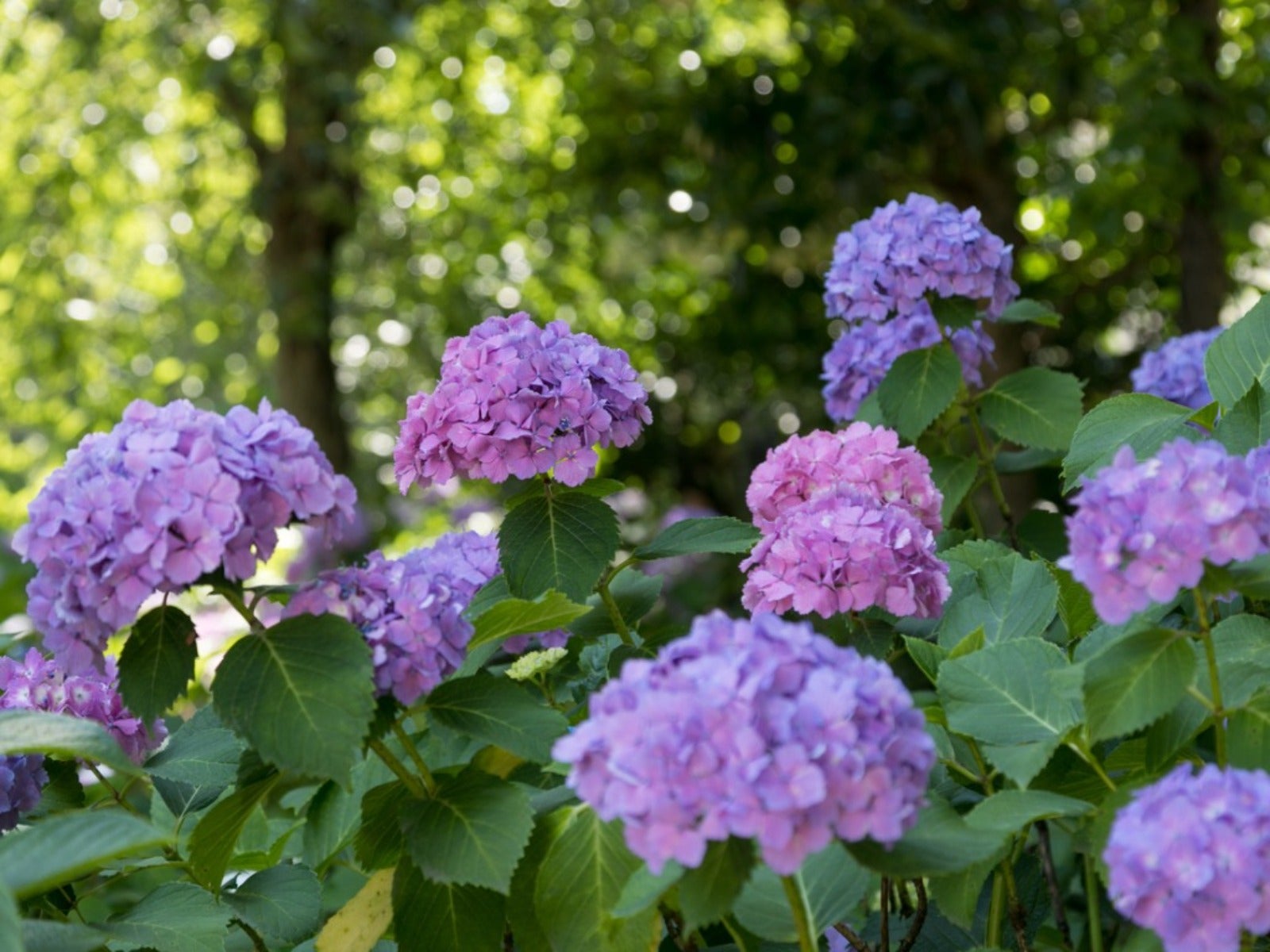Best Hydrangeas For Shade Gardens


Many gardeners are fans of hydrangeas, hard-working shrubs with enormous blossoms and easy care ways. Hydrangeas are incredibly tolerant of different growing conditions as long as they have well-draining soil and the occasional drink.
Can hydrangeas grow in shade? Most species of hydrangea are happiest in partial shade, and a few can even be called full shade hydrangeas. Read on to learn more about the best hydrangeas for shade.
Hydrangea Flowers
It’s rare to find a type of shrub that can offer flowers from May through the end of autumn, but hydrangeas can do this and more. Some even offer winter interest as well. The hydrangea genus includes eleven deciduous species of flowering shrubs, small trees, and climbing vines.
Perhaps the best known of the hydrangeas is the mophead style of Hydrangea macrophylla. Blossoms grow into the popular snow-ball shape in shades of pink, red, and blue. The colorful flower petals are actually sepals, modified leaves, while the fertile flowers are much smaller and hidden inside.
The “lacecap” version of this species displays the small, fertile flowers in the flat center of the blossom with the sepals surrounding them. The third type of flower grown by hydrangeas is the panicle, a long, tapering blossom. You’ll see panicle flowers on Hydrangea paniculata and Hydrangea quercifolia.
Hydrangea Shade Placement
All hydrangeas, without exception, will do best in a spot where they receive some shade during the day. The ideal spot can be in partial shade, with over three hours of direct sun, or in more shade, with less sun. The preference between these–hydrangea partial shade and hydrangea more shade–will depend on the species.
Nothing makes a hydrangea unhappy faster than hot, sunny, dry beds that bake in the afternoon sun. All hydrangeas except Hydrangea paniclata prefer cool morning sun to sweltering afternoon blaze.
Gardening tips, videos, info and more delivered right to your inbox!
Sign up for the Gardening Know How newsletter today and receive a free copy of our e-book "How to Grow Delicious Tomatoes".
What else do hydrangeas need to thrive? They prefer to sink their roots into soil that has been generously amended with compost or other organic matter. This also helps hold the moisture into the soil. Don’t forget that “hydra” means water, and newly planted hydrangeas must be watered regularly and generously until established. A layer of mulch atop the soil also helps lock in that water.
Best Hydrangea for Shade
If your garden is shady, you’ll need to figure out how much sun a site actually gets in order to pick the best hydrangea for that spot. When a site is hit by sunshine directly for more than a few hours a day, the exposure is classified as partial shade.
Hydrangeas that love a partial shade location include the vast majority of the species, including bigleaf hydrangea (Hydrangea macrophylla), both mopheads and lacecaps, as well as oakleaf hydrangea (Hydrangea quercifolia), a tough, native shrub with foliage similar to oak trees, and mountain hydrangea (Hydrangea serrata).
If you have a little more sunlight in a site on a regular basis, smooth hydrangeas (Hydrangea arborescens) are the way to go. This is a larger shrub that works well for a hedge. It is also the most heat hardy of the hydrangeas.

Teo Spengler is a master gardener and a docent at the San Francisco Botanical Garden, where she hosts public tours. She has studied horticulture and written about nature, trees, plants, and gardening for more than two decades. Her extended family includes some 30 houseplants and hundreds of outdoor plants, including 250 trees, which are her main passion. Spengler currently splits her life between San Francisco and the French Basque Country, though she was raised in Alaska, giving her experience of gardening in a range of climates.
-
 Looking For Plants To Give You The Soft And Fuzzies? Try These 5 Fuzzy Leaf Plant Options
Looking For Plants To Give You The Soft And Fuzzies? Try These 5 Fuzzy Leaf Plant OptionsLovers of texture, drama, silver foliage and tactile plants will adore these special sensory garden additions. These fuzzy leaf plant options will leave you all aglow
By Susan Albert
-
 Get Ready For A Summer Of Hummers! Grow These Full Sun Hummingbird Plants and Flowers
Get Ready For A Summer Of Hummers! Grow These Full Sun Hummingbird Plants and FlowersIf you’re lucky enough to enjoy a sunny backyard, make sure you are maxing out on your pollinator opportunities and grow these full sun hummingbird plants and flowers
By Tonya Barnett